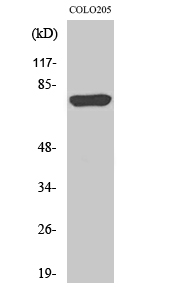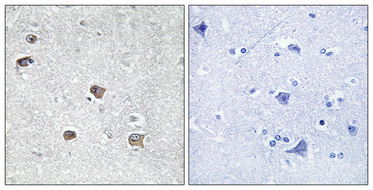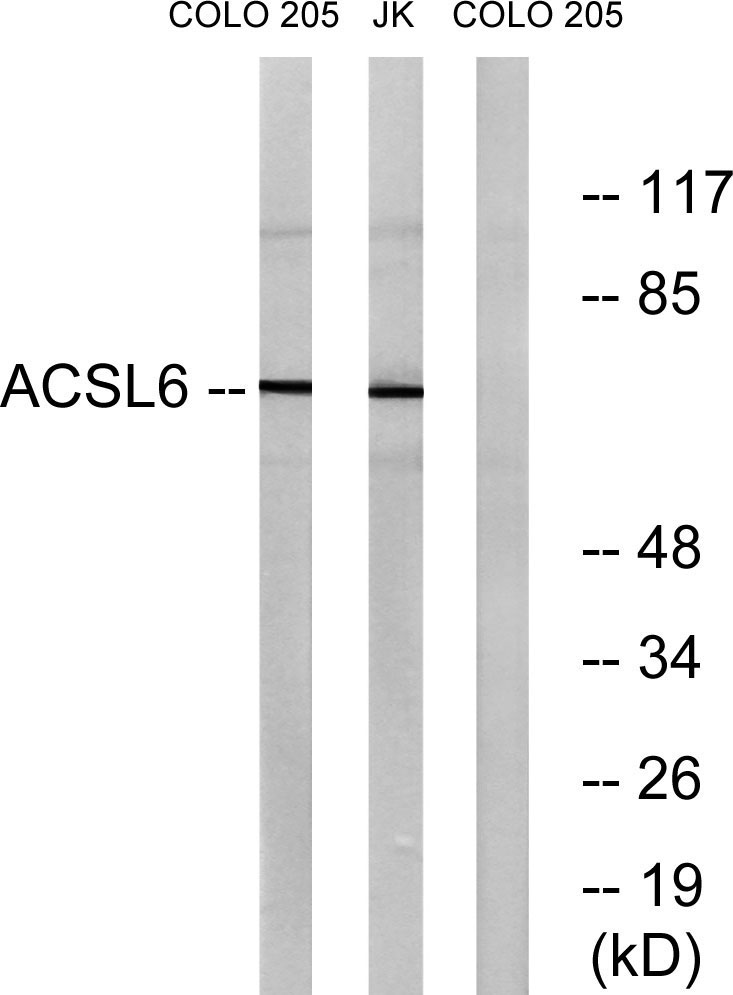ACSL6 Polyclonal Antibody
- Catalog No.:YT0092
- Applications:WB;IHC;IF;ELISA
- Reactivity:Human;Mouse;Rat
- Target:
- ACSL6
- Fields:
- >>Fatty acid biosynthesis;>>Fatty acid degradation;>>Metabolic pathways;>>Fatty acid metabolism;>>PPAR signaling pathway;>>Peroxisome;>>Ferroptosis;>>Thermogenesis;>>Adipocytokine signaling pathway
- Gene Name:
- ACSL6
- Protein Name:
- Long-chain-fatty-acid--CoA ligase 6
- Human Gene Id:
- 23305
- Human Swiss Prot No:
- Q9UKU0
- Mouse Gene Id:
- 216739
- Mouse Swiss Prot No:
- Q91WC3
- Rat Gene Id:
- 117243
- Rat Swiss Prot No:
- P33124
- Immunogen:
- The antiserum was produced against synthesized peptide derived from human ACSL6. AA range:499-548
- Specificity:
- ACSL6 Polyclonal Antibody detects endogenous levels of ACSL6 protein.
- Formulation:
- Liquid in PBS containing 50% glycerol, 0.5% BSA and 0.02% sodium azide.
- Source:
- Polyclonal, Rabbit,IgG
- Dilution:
- WB 1:500 - 1:2000. IHC 1:100 - 1:300. ELISA: 1:40000.. IF 1:50-200
- Purification:
- The antibody was affinity-purified from rabbit antiserum by affinity-chromatography using epitope-specific immunogen.
- Concentration:
- 1 mg/ml
- Storage Stability:
- -15°C to -25°C/1 year(Do not lower than -25°C)
- Other Name:
- ACSL6;ACS2;FACL6;KIAA0837;LACS5;Long-chain-fatty-acid--CoA ligase 6;Long-chain acyl-CoA synthetase 6;LACS 6
- Observed Band(KD):
- 78kD
- Background:
- The protein encoded by this gene catalyzes the formation of acyl-CoA from fatty acids, ATP, and CoA, using magnesium as a cofactor. The encoded protein plays a major role in fatty acid metabolism in the brain. Translocations with the ETV6 gene are causes of myelodysplastic syndrome with basophilia, acute myelogenous leukemia with eosinophilia, and acute eosinophilic leukemia. Several transcript variants encoding different isoforms have been found for this gene.[provided by RefSeq, Apr 2011],
- Function:
- catalytic activity:ATP + a long-chain carboxylic acid + CoA = AMP + diphosphate + an acyl-CoA.,cofactor:Magnesium.,developmental stage:Expression is low at earlier stages of erythroid development but is very high in reticulocytes.,disease:A chromosomal aberration involving ACSL6 may be a cause of acute eosinophilic leukemia (AEL). Translocation t(5;12)(q31;p13) with ETV6.,disease:A chromosomal aberration involving ACSL6 may be a cause of acute myelogenous leukemia with eosinophilia. Translocation t(5;12)(q31;p13) with ETV6.,disease:A chromosomal aberration involving ACSL6 may be a cause of myelodysplastic syndrome with basophilia. Translocation t(5;12)(q31;p13) with ETV6.,function:Activation of long-chain fatty acids for both synthesis of cellular lipids, and degradation via beta-oxidation. Plays an important role in fatty acid metabolism in brain and the acyl-CoAs produced may be utiliz
- Subcellular Location:
- Mitochondrion outer membrane ; Single-pass type III membrane protein . Peroxisome membrane ; Single-pass type III membrane protein . Microsome membrane ; Single-pass type III membrane protein . Endoplasmic reticulum membrane ; Single-pass type III membrane protein .
- Expression:
- Expressed predominantly in erythrocyte precursors, in particular in reticulocytes, fetal blood cells derived from fetal liver, hemopoietic stem cells from cord blood, bone marrow and brain.
- June 19-2018
- WESTERN IMMUNOBLOTTING PROTOCOL
- June 19-2018
- IMMUNOHISTOCHEMISTRY-PARAFFIN PROTOCOL
- June 19-2018
- IMMUNOFLUORESCENCE PROTOCOL
- September 08-2020
- FLOW-CYTOMEYRT-PROTOCOL
- May 20-2022
- Cell-Based ELISA│解您多样本WB检测之困扰
- July 13-2018
- CELL-BASED-ELISA-PROTOCOL-FOR-ACETYL-PROTEIN
- July 13-2018
- CELL-BASED-ELISA-PROTOCOL-FOR-PHOSPHO-PROTEIN
- July 13-2018
- Antibody-FAQs
- Products Images

- Western Blot analysis of various cells using ACSL6 Polyclonal Antibody diluted at 1:1000

- Immunohistochemical analysis of paraffin-embedded Human brain. Antibody was diluted at 1:100(4° overnight). High-pressure and temperature Tris-EDTA,pH8.0 was used for antigen retrieval. Negetive contrl (right) obtaned from antibody was pre-absorbed by immunogen peptide.

- Western blot analysis of lysates from COLO and Jurkat cells, using ACSL6 Antibody. The lane on the right is blocked with the synthesized peptide.



